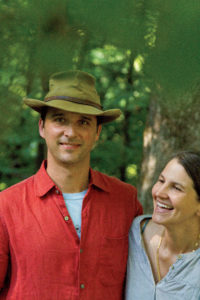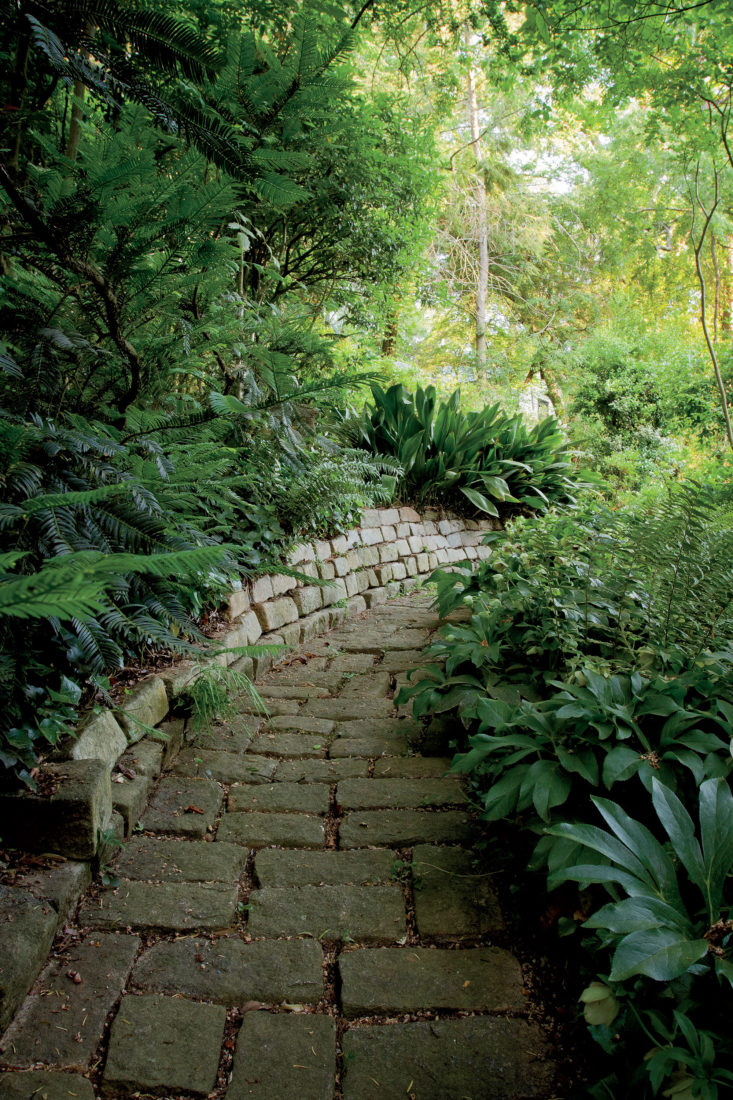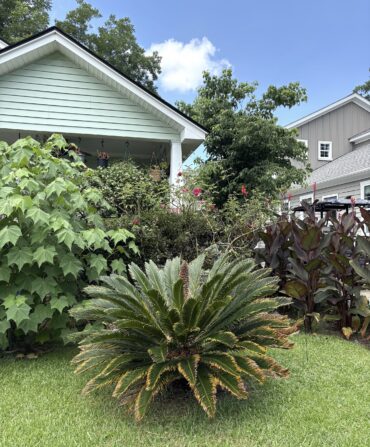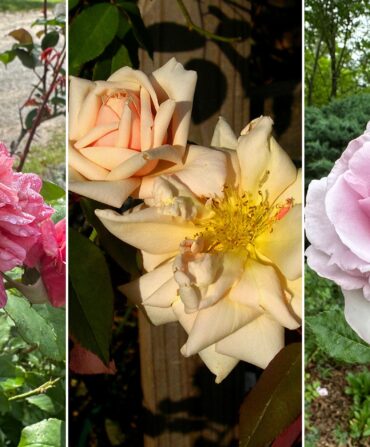The artist and photographer Rinne Allen riffles through a stack of light drawings on her studio worktable. These reverse images of ferns, oak leaves, and mimosa branches stand in stark white contrast against their cyan and sepia backgrounds. Allen lays the garden plants atop paper brushed with light-sensitive pigment and lets the midday sun take care of the rest. “Sometimes the plants move a bit, and that’s just fine,” she says, tracing a pale, evanescent swoosh with her finger where a fan-shaped ginkgo leaf had blown off one drawing. “It’s like a ghost.”

Photo: Rinne Allen
Rinne Allen and her husband, Lee Smith.
Allen and her husband, Lee Smith, know all about ghosts in their garden. The couple bought their Athens, Georgia, home fifteen years ago from the estate of John Linley, a longtime professor of landscape architecture at the University of Georgia who had spent the better part of three decades curating the sloping acre of land behind the house. Linley laid pathways with discarded cobblestones that once paved nearby College Avenue, terraced level clearings on the hillside, and planted all manner of ground cover, bushes, and trees. A cypress he placed in a creek bed fed from a runoff culvert now stands fifty feet tall and peeks over the tops of downtown buildings.
Linley’s students used to routinely roll up their sleeves and earn credit by hauling away wheelbarrows of dirt that once covered the strata of stone outcroppings that edge the garden. As Linley grew older, he often taught class on the grassy clearings.
The garden was famous throughout Athens, and its sale came with a tacit easement: Anyone with an attachment to it was welcome to come anytime to walk its paths lined with strawberry begonia and feathery selaginella, which turns an iridescent blue under the shade of hemlock trees. “They are all plants commonly found in Southern gardens,” says Smith, a builder who spends about ten hours a week tending the garden to preserve Linley’s vision.

Photo: Rinne Allen
Allen’s fine-art light drawings.
At first that was a daunting task. “We often asked ourselves, What would John Linley do?” Smith says. For years he and Allen hesitated to make any changes, even resisting the temptation to clear out a stand of cherry laurels that was hogging the light and choking a path. But one day a former student of Linley’s stopped by for a visit and said, shuddering, “John would never let them get this big!” From that point on, Smith felt he could garden “more in keeping with the spirit of Mr. Linley’s design if not every plant material.”
Former students drop in every six months or so, sometimes with their families in tow. One couple asked to hold their wedding ceremony in the garden, and Smith and Allen assented. “It’s kind of an underground thing, but we have an open-door visitation policy,” Allen says.
Winding her way back up to the house, Allen reaches a turn in the path that Linley marked with a stone hitching post he had salvaged from a demolished house. A Japanese climbing fern had started to curl in a particularly appealing arc along the post, and she made a mental note to come back and harvest it for a light drawing. In her mind’s eye she could see this fern trailing across the paper, capturing the day’s sun.








